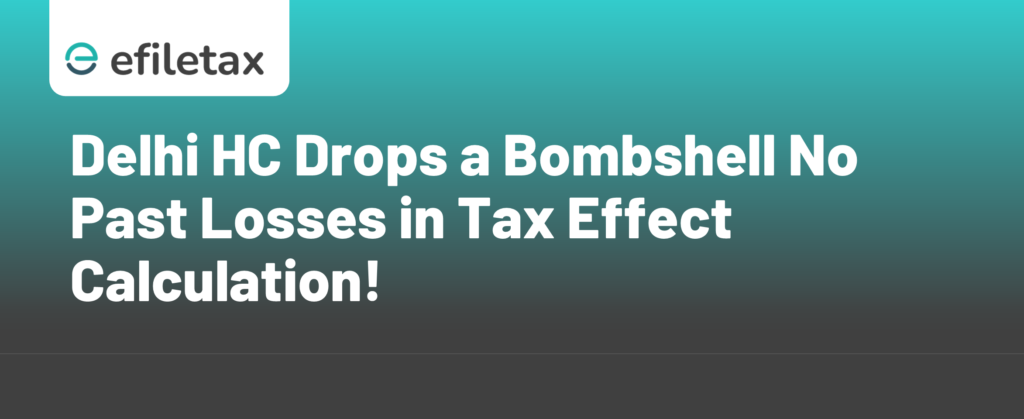
CBDT Circular on Tax Effect Delhi HC Clarifies Losses Can’t Be Included
In a significant ruling, the Delhi High Court has held that losses of previous assessment years should not be included while computing the “tax effect” under CBDT Circulars for filing appeals before Income Tax Appellate Tribunal (ITAT). This decision reinforces judicial clarity and has implications for both taxpayers and tax authorities navigating litigation thresholds.
What is “Tax Effect” Under CBDT Circulars?
CBDT issues internal circulars that set monetary limits for filing appeals to reduce tax litigation. The “tax effect” essentially means the difference between tax on returned income and assessed income.
Example:
If tax on returned income = ₹0
Tax on assessed income (due to disallowance) = ₹12 lakh
Then tax effect = ₹12 lakh
But confusion arose when past year losses were adjusted — should those losses reduce the assessed income figure?
The Core Issue in the Delhi HC Case
Case Title: Pr. CIT v. Meeta Gutgutia (ITA 525/2017)
Key Issue:
Can the tax department include past losses or depreciation while computing the “tax effect” for deciding if an appeal should be filed?
CBDT Circular No. 21/2015 and Circular No. 17/2019 set the thresholds, but didn’t clarify this specific scenario.
Delhi HC’s Ruling: Key Takeaways
✔️ Past losses shouldn’t be factored in computing tax effect for appeal thresholds.
✔️ The tax effect should be calculated only on the income assessed in that year, without considering past carry-forward losses.
✔️ This aligns with the CBDT’s intent to reduce frivolous litigation and backlog.
What This Means for Taxpayers and the Department
For Taxpayers
- Relief in low-tax-effect cases involving set-off of brought-forward losses.
- Appeals may not be maintainable if tax effect (excluding past losses) is below limits.
For the Department
- Cannot justify appeals by inflating tax effect via adjusted losses.
- Must adhere strictly to monetary limits in Circulars.
Expert Insight: Practical Tip
“Always compute your current year tax liability standalone while reviewing appeal prospects. Don’t mix in past losses — this can invalidate the department’s appeal,” says CA Rakesh Jain, Delhi-based tax litigation expert.
Legal Reference
- CBDT Circular No. 21/2015, dated 10.12.2015
- CBDT Circular No. 17/2019, dated 08.08.2019
- Delhi HC Judgment: Download here (indiankanoon.org)
Comparison Table: Tax Effect Computation
| Particulars | With Past Losses | Without Past Losses (Correct) |
|---|---|---|
| Assessed Income | ₹10,00,000 | ₹10,00,000 |
| Set-off of Past Losses | ₹8,00,000 | Not applicable |
| Net Taxable Income | ₹2,00,000 | ₹10,00,000 |
| Tax Effect Computed | ₹60,000 | ₹3,00,000 |
| Appeal Threshold Met? | ❌ | ✅ (Above ₹2 lakh) |
Frequently Asked Questions (FAQ)
Q1. What is the current tax effect limit for ITAT appeals?
As per CBDT Circular No. 17/2019, the monetary limit is ₹50 lakh for ITAT appeals.
Q2. Is this ruling applicable to pending cases?
Yes, it provides persuasive authority and can be cited in similar disputes across India.
Q3. Can the department still file an appeal if tax effect is below the limit?
Only if the case falls under exceptions like audit objections, constitutional validity, or board directions.
Summary for Google Snippet
Only current year income counts. This curbs unnecessary income tax appeals and streamlines litigation.
Final Thoughts
This ruling from the Delhi High Court marks another step toward reducing tax litigation and ensuring consistent application of CBDT circulars. Both tax professionals and assessees should align their appeal strategies accordingly.